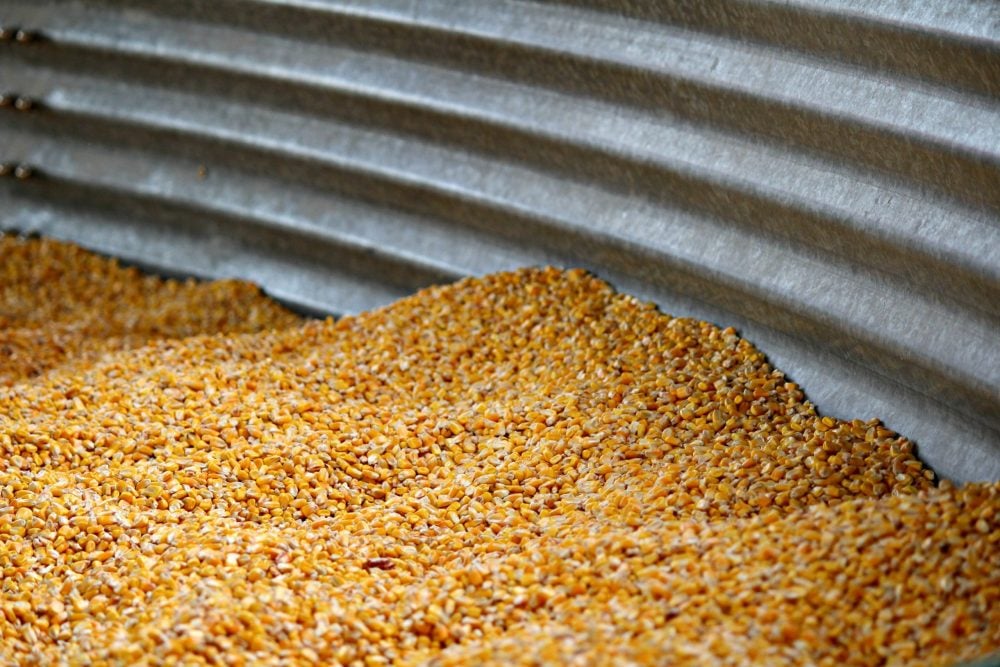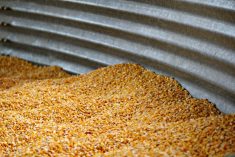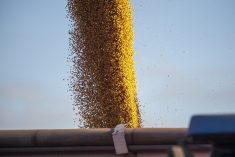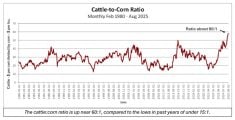Ontario wheat, corn and soybean prices are being influenced by macro market conditions. The world grain and oilseed markets continue to digest the coronavirus situation.
Softer import demand from China and Southeast Asia has resulted in lower world values. At the time of writing this article, it appears that Italy, certain regions in Europe and some Middle Eastern countries were also being affected more severely than earlier anticipated.
Quick look
Soybeans: There’s a lack of local demand for Ontario soybeans.
Read Also

Cycle swings dictate farming profitability
It can be profitable to understand where the crop markets are positioned in the context of their big-picture cycles.
Wheat: There should be more wheat produced in Ontario in 2020 versus 2019, but that could lower local price.
Ideas are that the virus has now spread to developed countries which has potential to lower overall imports. The soybean, corn and wheat markets are incorporating a risk discount due to the uncertainty in demand. Secondly, the main South American soybean harvest will move into high gear during March and April.
Favourable weather conditions have enhanced crop prospects in Brazil and Argentina. Russia’s winter wheat crop has made it through January and February without adverse temperatures affecting output potential.
The USDA Agriculture Outlook Forum was considered bearish for corn while wheat and soybean projections were viewed as neutral to slightly positive; however, traders are not putting too much emphasis on these projections given the current market environment. The USDA outlook did not reflect China’s commitment to buy $40 billion in agriculture products but the forecast did project a rise in acreage making up the prevented planting acres in 2019.
The Canadian dollar continues to trade near three-month lows which has cushioned the Ontario farmer from the fallout from weaker world grain and oilseed prices. The U.S. greenback has been percolating higher as investors seek the safe haven mechanism. Weaker crude oil values have led commodity indexes lower, which has also contributed to weakness in the resource-based currency.
The U.S. Federal Reserve and the Bank of Canada appear to have a neutral monetary policy for the time being and no rate adjustments are expected for the remainder of 2020.
Soybeans
Ontario soybeans appear to be lacking demand at the current levels and continue to trade below imported U.S. soybeans. Recent data from Statistics Canada Canadian crop -year-to-date imports to Dec. 31 were 109,500 tonnes, down from 629,600 tonnes last year. Remember last year, Canada had a large export program to China resulting in U.S. soybeans flowing into Eastern Canada.
This year, the trade economics are totally different. First, Statistics Canada said the Canadian soybean crush from Sept. 1, 2019 through Jan. 31, 2020 was 747,156 tonnes, down 19 per cent from 913,691 tonnes for the same period last year. Canadian crop-year-to-date soybean exports to December 31 were 2.1 million tonnes, down from 3.6 million tonnes last year.
Canada is experiencing a year-over-year decline in imports but also a drop in the domestic crush and offshore movement. The function of the Ontario soybean market moving forward will be to encourage demand through lower prices.
Brazilian farmers have harvested approximately 30 per cent of the soybean crop as of Feb. 23. The Brazilian real has been trading near historical lows making offers more competitive than North American soybeans on the world market. We’ll see more aggressive selling pressure over the next month as the harvest moves over 50 per cent complete.
The Brazilian crop is estimated at 123 million tonnes, up from year-ago output of 117 million tonnes. The Argentinian soybean crop will move into the critical pod filling stage during March and is currently estimated at 53 million tonnes, down from 55 million tonnes last year. The USDA expects U.S. 2020 soybean production to reach 114 million tonnes, up from the 2019 output of 97 million tonnes. There will be no shortage of soybean supplies during the 2020-21 crop year. More importantly, the million-dollar question moving forward is Chinese demand for soybeans, soymeal and vegetable oils. African swine fever along with the coronavirus situation has dented import demand and it’s difficult to say when these issues will be totally resolved so that logistics and consumption levels resume to normal.
What to do: We’ve advised producers to be 80 per cent sold on old crop and 20 per cent sold on new crop. We recommend keeping 20 per cent of the crop back until the new crop is more certain. In some years, the market incorporates a risk premium during spring but we consider bounces in the market as selling opportunities.
Corn
Ontario corn prices are down approximately10 cents per bushel from earlier in February and local elevator bids remain elevated relative to world values.
We mentioned in the previous article that the function of the Ontario corn market is to encourage imports and the use of alternate feed grains in domestic feed channels. The fact that the market has held up reflects that available corn stocks are tighter than earlier anticipated. The Ontario corn market has divorced from the futures market for the time being because of the delayed harvest and the fact some corn remains in the field.
U.S. domestic corn basis levels are also relatively strong compared to historical norms across the Midwest. Without going into detail, the U.S. domestic market is stronger than world values. Year-to-date U.S. exports are coming in lower than expected. U.S. offers out of the Gulf are slightly above Argentine values while Brazilian offers are quiet. Brazil’s first crop harvest is about 25 per cent harvested. Approximately two thirds of Brazil’s corn crop is produced from the second crop which is about 30 per cent seeded at this stage. The USDA Agricultural Outlook had 2020 corn acres up 4.8 per cent from last year.
Using a trend yield, U.S. corn production was forecasted to reach 393 million tonnes, up from the 2019 output of 348 million tonnes. Without going into the details of demand, the 2020-21 U.S. corn carryout was projected to come in at 67 million tonnes, up from the 2019-20 ending stocks projection of 48 million tonnes. If this production estimate materializes, we’ll see U.S. corn flow readily into Ontario and Western Canada during the 2020-21 crop year. The outlook was considered extremely negative for new crop prices.
What to do: In the previous article, we advised Ontario producers to be 70 per cent sold on old crop and 10 per cent sold on new crop. This week, we’re advising producers to increase old crop sales to 80 per cent. If producers feel comfortable, we believe it’s prudent to step up new crop sales to 20 per cent.
Wheat
When it comes to wheat, Ontario remains an island in the world market. Local elevator bids are unchanged to slightly lower compared to two weeks ago. Earlier in winter, the world market incorporated a risk premium due to the uncertainty in production.
This risk premium is now eroding given the favorable conditions for the Northern Hemisphere winter wheat crops. Secondly, there is a fair amount of wheat to come on the market from major exporters prior to the new crop harvest. Seasonally, wheat prices trend lower from early March through early May.
Weather across Russia has been favorable and the risk of winter-kill has evaporated. Recent estimates have the 2020 Russian wheat crop at 83 to 88 million tonnes, up from the 2019 output of 73 million tonnes.
Ukraine production for 2020 has potential to reach 30 to 32 million tonnes, up from 29 million tonnes last year. Conditions in the U.S. Southern Plains have also improved. Despite the lower seeded area, above average yields are expected.
We’re now forecasting the U.S. hard red winter wheat crop to finish near 22 million tonnes, very similar to last year’s crop size. Canada’s total non durum wheat crop for 2020-21 is projected to reach up to 30 million tonnes, up from the 2019 non-durum wheat crop of 27.3 million tonnes. The year-over-year increase in Canada, Russia and the Ukraine is more than offsetting the potential year-over-year decline in Europe. COCEREAL estimated EU soft wheat production at 138 million tonnes, down from the 2019 crop of 146 million tonnes.
Ontario winter wheat acreage was estimated at one million, about the same as last year. However, harvested acreage in 2019 was only about 656,000 acres. This year, we are factoring in a traditional harvested area. Therefore, Ontario winter wheat production has potential to reach two million tonnes, up from 1.4 million tonnes last year. Keep in mind that fusarium was a major problem in 2019. At this stage, we factor in a traditional quality situation. Ontario has a bearish scenario for new crop wheat.
What to do: We’ve advised producers to be 80 per cent sold on their 2019 winter wheat production. This week, we’re advising producers to sell their first 20 per cent increment of the 2020 crop. New crop values have been held up by old crop prices. As the new crop becomes more certain, we expect Ontario prices to trend lower.













